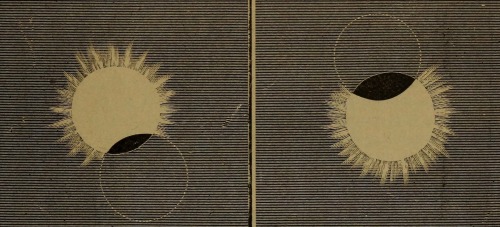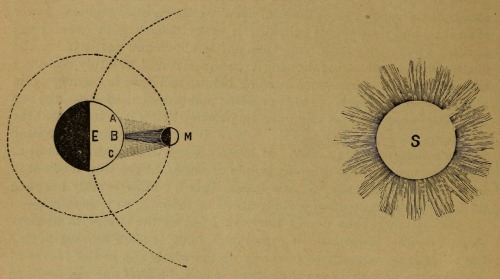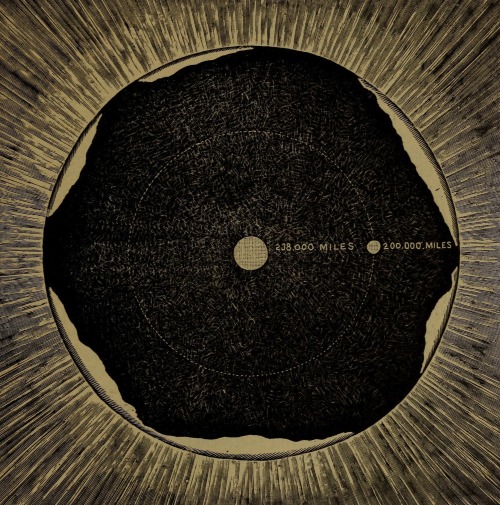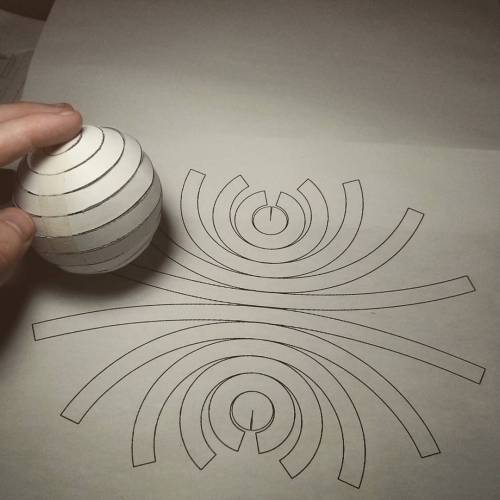Latest Posts by hannahhaifisch - Page 5

Let it go ❄
(snowflake designs by Tomoko Fuae, Joseph Wu, Shuzo Fujimoto, and Dennis Walker)
#snowflakes #origami #paperart #papercraft #paper #art #craft #design #sculpture #daily #illustration #instaart #instaartist #snow #snowflake #winter #ice #frozen #elsa #papersnowflakes



Chalcedony - Mamuju Area, Sulawesi Barat Province, Sulawesi Island, Indonesia

Native Gold with White Quartz
Eagle’s Nest Mine, Placer County, California

Sentinels of the Arctic http://go.nasa.gov/2n1ynuo











Interlocked Coins Form Complex Geometric Sculptures

Brookite
Locality: Kharan, Baluchistan, Pakistan










Ask Ethan: Does Dark Energy Mean We’re Losing Information About The Universe?
“The universe’s expansion means our visible horizon is retreating; things faraway are vanishing continuously. (Albeit slowly, right now.) This would seem to imply we are losing information about the universe. So why is it the idea of losing information in a black hole’s event horizon is so controversial, if we’re constantly losing information to another horizon?”
As you look to greater and greater distances, you’re looking back in time in the Universe. But thanks to dark energy, what we can see and access today isn’t always going to be accessible. As galaxies grow more distant with the accelerated expansion of the Universe, they eventually recede faster than the speed of light. At present, 97% of the galaxies in the Universe aren’t reachable by us, even at the speed of light. But that isn’t the same as losing information. As a galaxy crosses over the horizon, its information never disappears from the Universe connected to us entirely. Instead, it gets imprinted on the cosmic horizon, the same way that information falling into a black hole gets imprinted on its event horizon. But there’s a fundamental difference between a black hole’s decaying horizon to the cosmic horizon’s eternal persistence, and that makes all the difference.
Come learn why even with dark energy, we don’t lose information about the Universe, but why the black hole information paradox is real!








Where Does The Mass Of A Proton Come From?
“It is very accurately known how large the average gluon density is inside a proton. What is not known is exactly where the gluons are located inside the proton. We model the gluons as located around the three valance quarks. Then we control the amount of fluctuations represented in the model by setting how large the gluon clouds are, and how far apart they are from each other.”
If you divide the matter we know into progressively smaller and smaller components, you’d find that atomic nuclei, made of protons and neutrons, compose the overwhelming majority of the mass we understand. But if you look inside each nucleon, you find that its constituents – quarks and gluons – account for less than 0.2% of their total mass. The remaining 99.8% must come from the unique binding energy due to the strong force. To understand how that mass comes about, we need to better understand not only the average distribution of sea quarks and gluons within the proton and heavy ions, but to reveal the fluctuations in the fields and particle locations within. The key to that is deep inelastic scattering, and we’re well on our way to uncovering the cosmic truths behind the origin of matter’s mass.




Tetrahedrite with Siderite
Locality: Saint-Pierre-de-Mesage, Vizille, Rhone-Alpes, France



Fluorite
Locality: Okorusu mine, Otjiwarongo District, Namibia


Manganese Dendrites on Limestone
Locality: Solnhofen, Bavaria, Germany







Samuel W. Hall. Corona of an Eclipse, Moon Hiding Lower and Upper Limb of Sun, Eclipse of the Sun, Moon Hiding Upper and Lower Limb of Sun, Comparative Size of the Planets, Size of the Sun, Elliptical Orbit. Sunshine and Moonlight; with; also, a Flash of Comets, Meteors and Shooting Stars, and a Twinkle of Starlight. 1889. Contd from here
The laws of thermodynamics are some of the most important principles in modern physics, because they define how three fundamental physical quantities - temperature, energy, and entropy - behave under various circumstances.
But now physicists say they’ve found a loophole in one of these laws, and it could create scenarios in which entropy - or disorder - actually decreases with time.
Continue Reading.

Hold a buoyant sphere like a ping pong ball underwater and let it go, and you’ll find that the ball pops up out of the water. Intuitively, you would think that letting the ball go from a lower depth would make it pop up higher – after all, it has a greater distance to accelerate over, right? But it turns out that the highest jumps comes from balls that rise the shortest distance. When released at greater depths, the buoyant sphere follows a path that swerves from side to side. This oscillating path is the result of vortices being shed off the ball, first on one side and then the other. (Image and research credit: T. Truscott et al.)

Stuff in My Office
Dr Warhol’s Periodic Table of Microbes
From: Ernst Haeckel’s book Kunstformen der Natur (1904). This illustration is plate 23 the Bryozoa.
I have noticed even people who claim everything is predestined, and that we can do nothing to change it, look before they cross the road.
Stephen Hawking (via fyp-science)


Robot uses Human to create Art - Dragan Ilic









Ernst Haeckel. Hexacoralla, Ascomycetes, Lichenes, Phaeodaria, Ophiodea, Spumellaria, Basimycetes, Diatomea, Amphoridea. Kunstformen der Natur (Art Forms in Nature). 1899-1904.

Can you flatten a sphere?
The answer is NO, you can not. This is why all map projections are innacurate and distorted, requiring some form of compromise between how accurate the angles, distances and areas in a globe are represented.
This is all due to Gauss’s Theorema Egregium, which dictates that you can only bend surfaces without distortion/stretching if you don’t change their Gaussian curvature.
The Gaussian curvature is an intrinsic and important property of a surface. Planes, cylinders and cones all have zero Gaussian curvature, and this is why you can make a tube or a party hat out of a flat piece of paper. A sphere has a positive Gaussian curvature, and a saddle shape has a negative one, so you cannot make those starting out with something flat.
If you like pizza then you are probably intimately familiar with this theorem. That universal trick of bending a pizza slice so it stiffens up is a direct result of the theorem, as the bend forces the other direction to stay flat as to maintain zero Gaussian curvature on the slice. Here’s a Numberphile video explaining it in more detail.
However, there are several ways to approximate a sphere as a collection of shapes you can flatten. For instance, you can project the surface of the sphere onto an icosahedron, a solid with 20 equal triangular faces, giving you what it is called the Dymaxion projection.
The Dymaxion map projection.
The problem with this technique is that you still have a sphere approximated by flat shapes, and not curved ones.
One of the earliest proofs of the surface area of the sphere (4πr2) came from the great Greek mathematician Archimedes. He realized that he could approximate the surface of the sphere arbitrarily close by stacks of truncated cones. The animation below shows this construction.
The great thing about cones is that not only they are curved surfaces, they also have zero curvature! This means we can flatten each of those conical strips onto a flat sheet of paper, which will then be a good approximation of a sphere.
So what does this flattened sphere approximated by conical strips look like? Check the image below.
But this is not the only way to distribute the strips. We could also align them by a corner, like this:
All of this is not exactly new, of course, but I never saw anyone assembling one of these. I wanted to try it out with paper, and that photo above is the result.
It’s really hard to put together and it doesn’t hold itself up too well, but it’s a nice little reminder that math works after all!
Here’s the PDF to print it out, if you want to try it yourself. Send me a picture if you do!

9 years in the making, all our best geometry in one place. ❤, NakGeo

Counting the stars in the universe is like trying to count the number of sand grains on a beach, it’s not possible. Although estimates vary among different experts, the general consensus is that there are at least between 100 billion and 200 billion galaxies in our universe. Think about that for a moment, and now throw in billions of stars in each galaxy! (source) This number could very easily be in the trillions for all we know.
A team of scientists gathered data on more than 8000 galaxies that surround the one we live in, also mentioned above, the Milky Way galaxy. They mapped each galaxies movement and position in space and discovered that the Milky Way galaxy is part of one giant system that contains a number of other galaxies, referred to as a supercluster.
